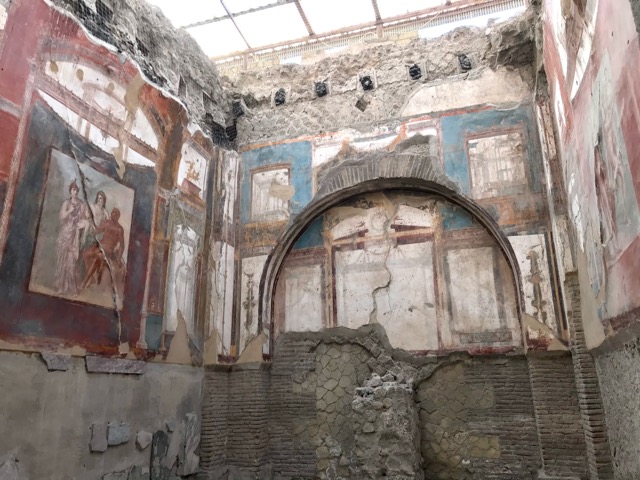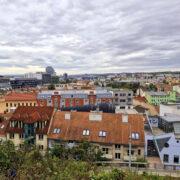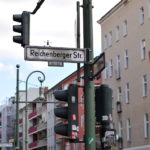How to visit and what to see in Herculaneum
Visiting Herculaneum is a rewarding trip, mainly due to being a smaller size than Pompeii and therefore time to see the whole site. Here’s how to visit Herculaneum, and why you should visit Herculaneum on your trip to Italy as well as visiting Pompeii.
Did you know that over 3.5 million people visit the ancient Roman city of Pompeii every year? Pompeii was buried by tonnes of volcanic ash and rocks when Mount Vesuvius erupted in AD79. However, did you know that there is another Roman city not far from Pompeii that receives a fraction of the visitors that go to Pompeii. That city is Herculaneum, and read on to find out more on how what to expect on your visit.
Mrs Foodie has wanted to visit Herculaneum and Pompeii since she was a young’un (yes that long!). We were spending New Year in Naples so with the ruins of Herculaneum being a mere 20-minute train journey away from the main station we made sure to spend 1 full day in Herculaneum and 1 full day in Pompeii. We would not recommend visiting both in a single day as Pompeii is spread out over a much larger area – we spent a full day there and still ran out of time to see everything!
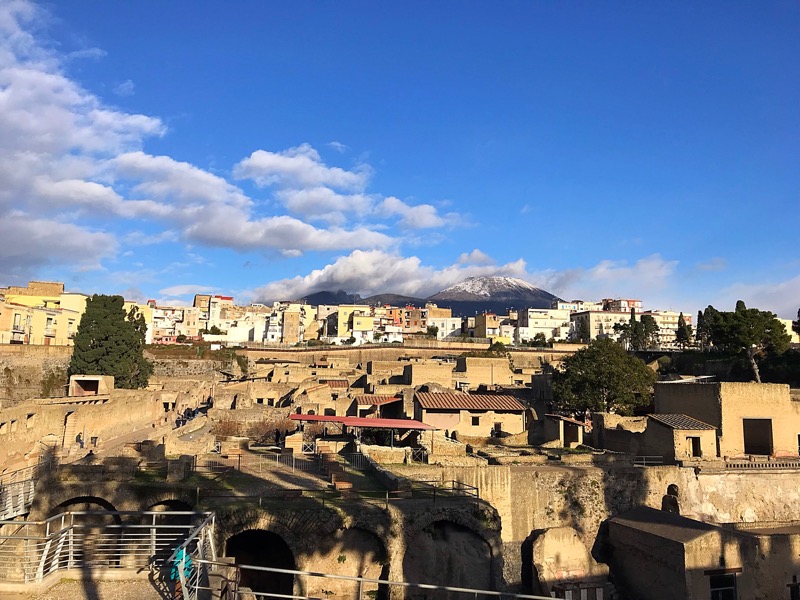
Where is Herculaneum?
Herculaneum lies between Naples and Sorrento, to the west of Mount Vesuvius, while Pompeii is further down the coast. Did you know that Mount Vesuvius is mainland Europe’s only active volcano?
Herculaneum lies on the opposite side of Mount Vesuvius to Pompeii and nearer to Naples. Each of the towns experienced different methods of destruction from the volcanic eruption in 79AD. Herculaneum by a lethal pyroclastic surge of hot gas and ash, whereas Pompeii was showered with rocks and debris. This has meant that the buildings in Herculaneum are better preserved.
Video
Why should I visit Herculaneum
Here are some reasons why you should visit Herculaneum:-
Herculaneum is different
Herculaneum is so different to Pompeii. Don’t think that Herculaneum is a smaller version of Pompeii.
Herculaneum is better preserved than Pompeii
The difference in the level of preservation at Herculaneum compared to Pompeii is huge. This is due to the different cities being damaged in different ways. When Mount Vesuvius erupted, the buildings in Pompeii were damaged mostly by falling rocks smashing into the housing below. Whereas at Herculaneum, the damage was caused by hot air and gas being propelled through the town.
Herculaneum is much smaller and quieter than Pompeii
Herculaneum is so much quieter to visit than Pompeii (We visited both). Being less popular means that the site has less crowds when you are wandering around.
Can you see Pompeii and Herculaneum in one day?
I think it is possible. But… not only would it be exhausting physically to visit both Pompeii and Herculaneum in one day. We both felt that visiting was emotional. So much death and especially at Herculaneum with the skeletons piled up.
Spend a whole day visiting Pompeii so you can take your time and experience the town without feeling that you are doing a smash-n-grab tourist visit. We spent a separate day in Herculaneum and took time out to visit some local cafes and absorb Italian life.
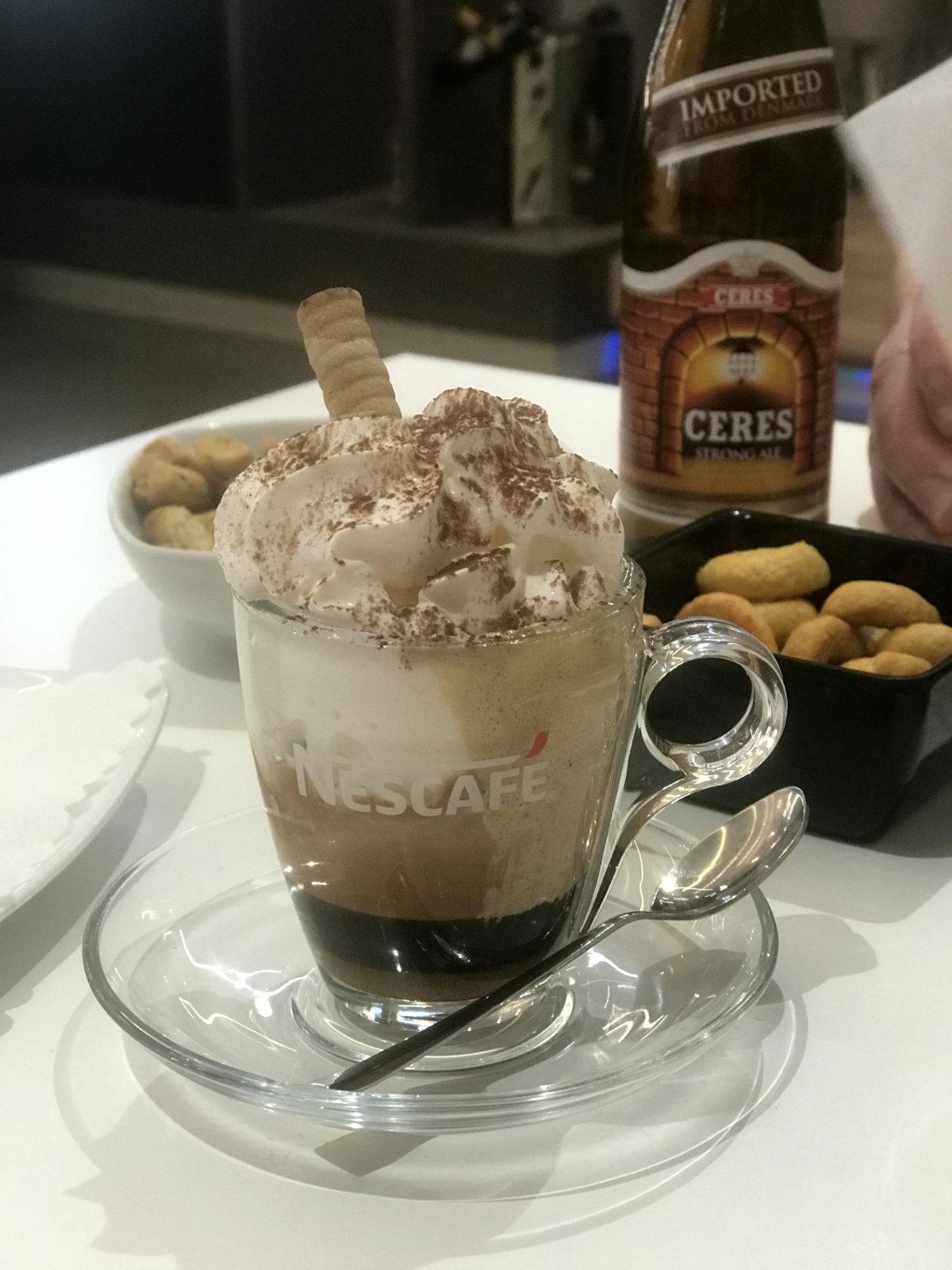
How to get to Herculaneum
Herculaneum (or Ercolano in Italian) is easy to get to by train as it is on the Naples to Sorrento railway line. The ruins of the Roman town are underneath the modern town of Ercolano, a 10-ten minute walk from Ercolano train station, which has regular services from Napoli Piazza Garibaldi.
Find full details of how to get to Herculaneum by train here.

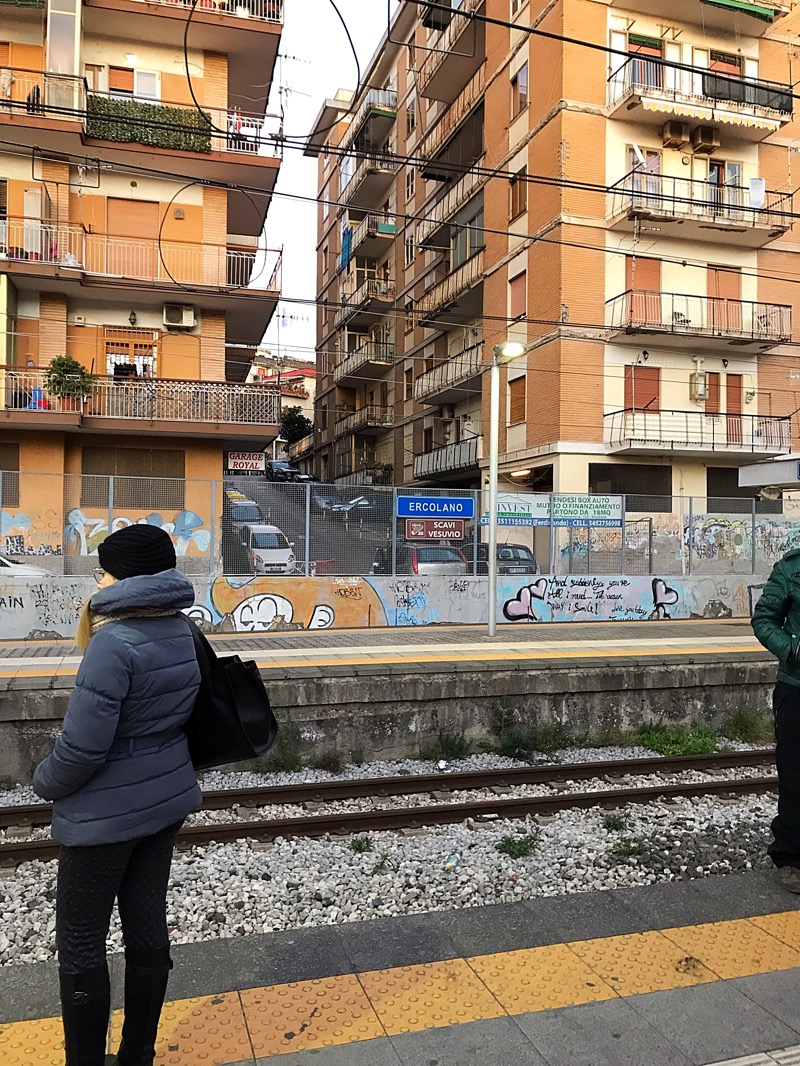
The Eruption
The eruption of Mt. Vesuvius on the afternoon of 24th August 79AD took most folks by surprise as it had been about 800 years since it last erupted. Unfortunately, Mount Vesuvius did erupt and engulfed the towns. Surprisingly, it seems that no one over the years had thought of having a dig about to see what was there until the 1700’s when a well was being dug.
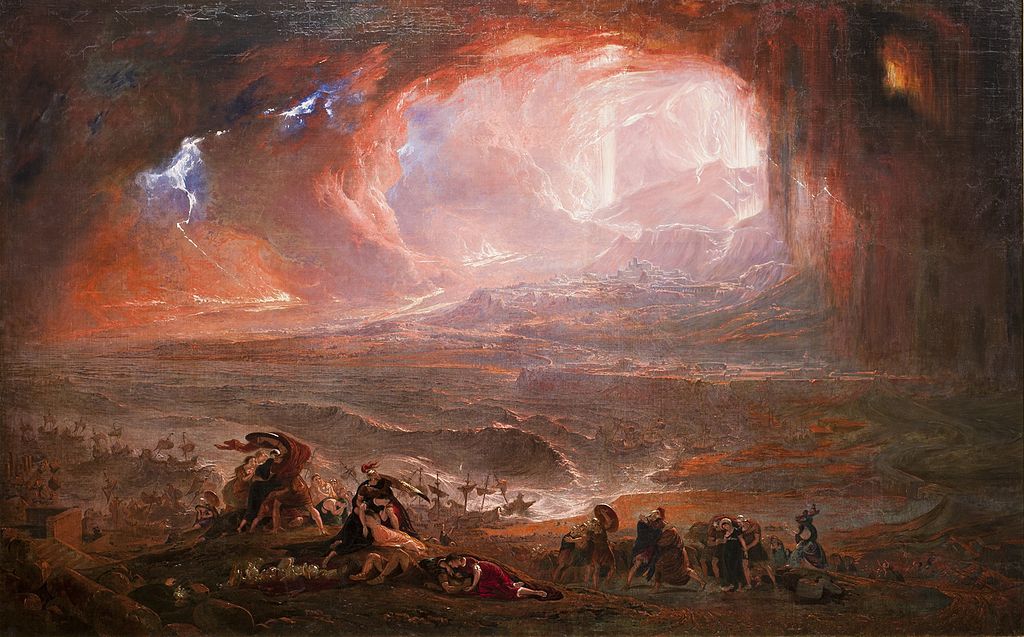
Visiting the Ruins of Herculaneum
How to buy tickets for Herculaneum
Entry tickets for Herculaneum can be purchased online or from the on-site ticket office.
If you’re planning to visit a few cultural sites in Campania, such as Pompeii and Vesuvius as well as Herculaneum, you can buy a Campania Artecard. There is a 3-day and 7-day version; each card gets you into both sites (plus a number of other sightseeing spots in the area) over the period of your chosen card.
Herculaneum opening hours
Opening times for the Herculaneum ruins are:-
1st April to 31st October – 8.30 am to 7.30 pm daily (last admission at 6 pm). Closed 1st May.
1st November to 31st March – 8.30 am to 5 pm daily, the last admission at 3.30 pm. Closed 25th December and 1st January.
Please check these timings before your visit on the Herculaneum official website.
Herculaneum admission prices
Single ticket: 13 euros
EU citizens under 18 and over 65: Free
Going to be visiting on the first Sunday of the month? Admission is free!

Download Official Maps

Official map of Herculaneum (free download) Italiano / English

Official Guide to Herculaneum (free download) Italiano English Espanol Français Deutsch

What to see at Herculaneum
The site of Herculaneum is deep under the current ground level and away from the coast, even though it was once a port. This is due to the city being covered in mud, ash, ensuring that it was entombed and preserved for the future. Being sealed away, there wasn’t as much plundering of goodies in comparison to Pompeii, such as those removed for The Secret Cabinet.
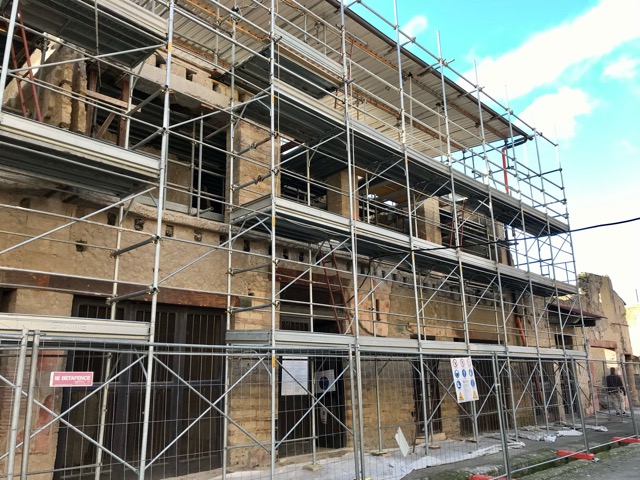
Around Herculaneum, you will see workers working away, preserving the site and possibly carrying out further excavations. Only a fraction of the site has been excavated, which you can access freely, but the main focus now is on preservation rather than further excavations.
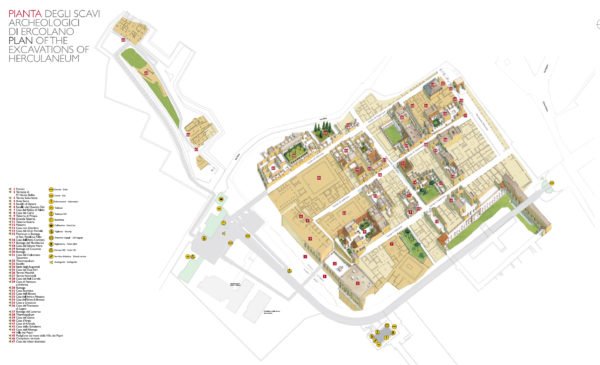
These are some of the main sites in Herculaneum. The number in the bracket relates to its position on the official map.
1) Fornici (1)
The fornici were the port warehouses. These shelters were once along the side of what was the beach. Within these structures are the remains of around 300 Herculaneum residents who perished trying to escape the eruption.
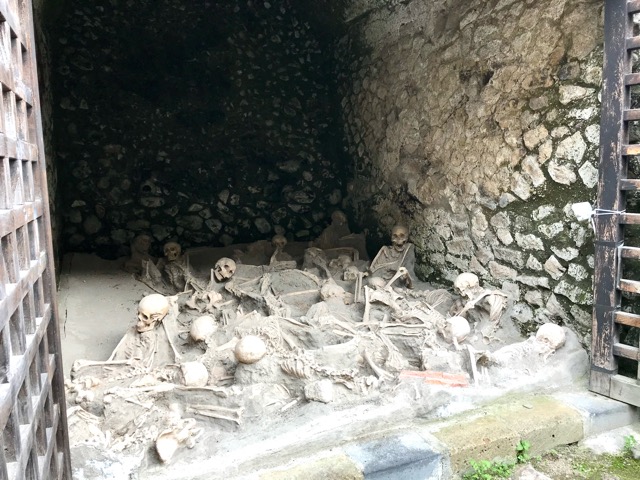
2) Hall of the Augustals (24)
The Augustales were free men who were devotees of the cult of Emperor Augustus. This area looks stunning with the remains of columns and frescoes.
3) Men’s Baths (26)
The Terme Centrali (Central Baths) were divided into areas for men and women.
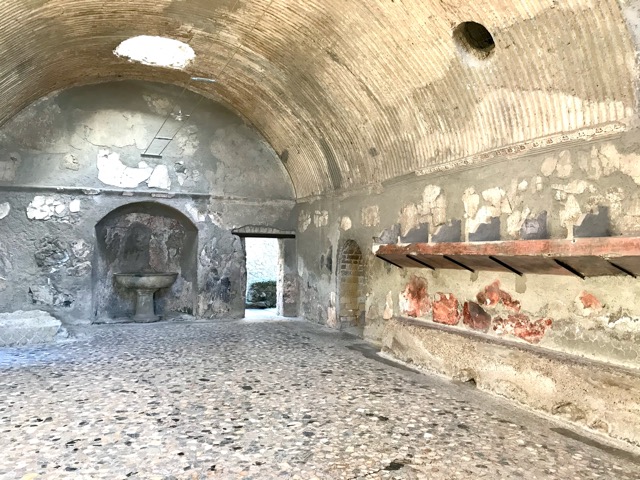
3) Samnite House (31)
The House of the Samnites is famous for its beautiful Greek-style atrium with a marble impluvium (rainwater pool).
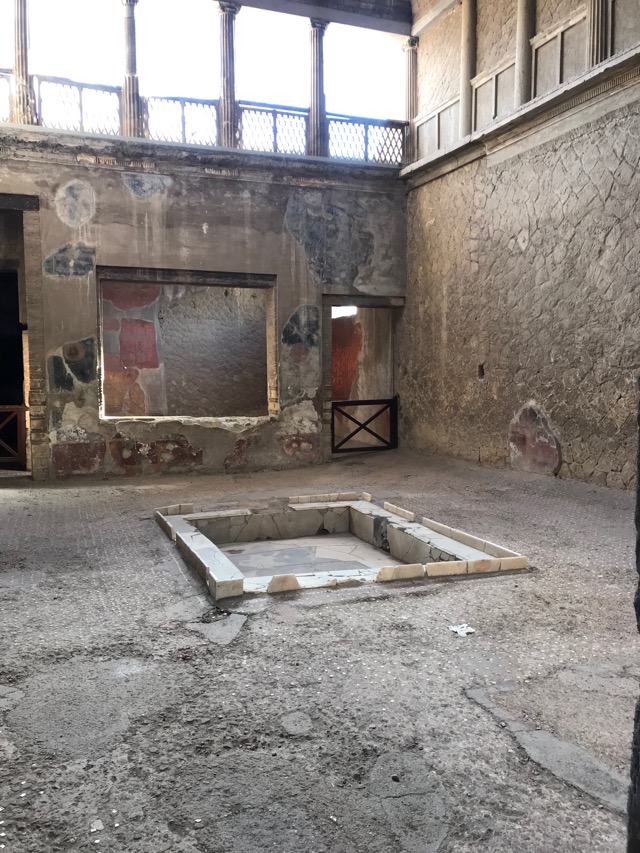
4) House of the Wooden Partition (36)
As you may realise, the name of this home comes from the wooden partition that stands here. The partition separated the atrium from the rest of the room.
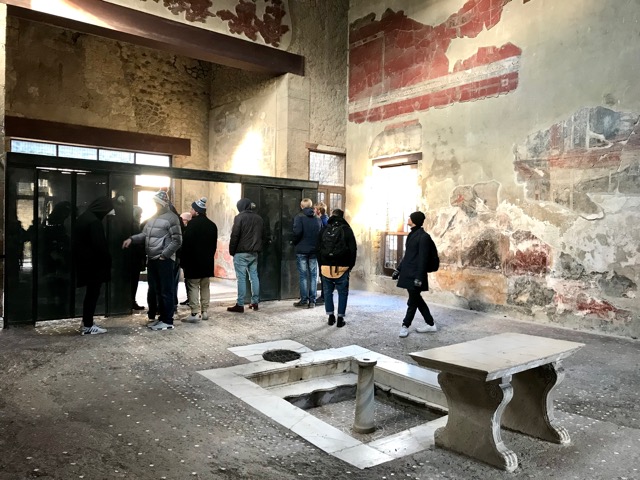
Visiting Herculaneum with Kids
Visiting Herculaneum with small children can be difficult. The streets are uneven and not suited for prams. The best way is to either carry small ones or restrict yourself to the upper viewing area.
More things to do in Herculaneum (Ercolano)
What else is there to see in Herculaneum (Ercolano)
The MAV Virtual Archaeology Museum has a virtual, interactive exhibition that recreates ancient Herculaneum as it was before the eruption. It’s open 9am to 5pm, Tuesday to Sunday. Tickets for adults cost 10 euro and children’s tickets are 8 euro and are available online up to 24 hours before your visit.
See the handy Pinterest image below if you wish to pin this for later
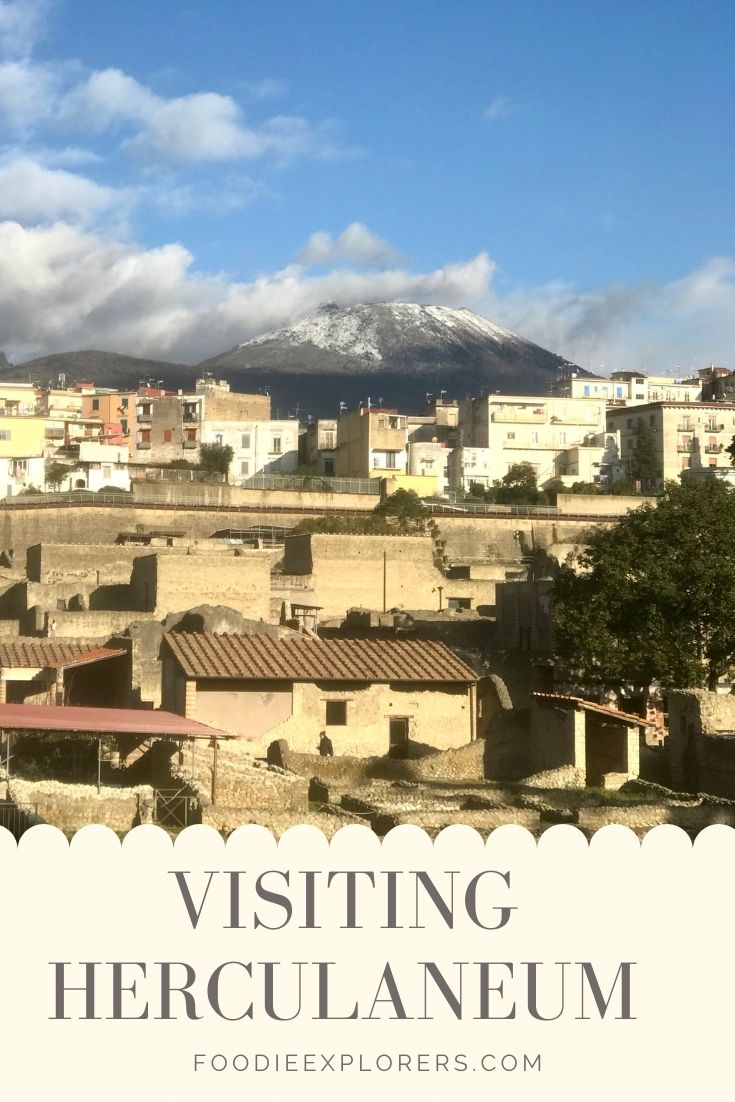
This site contains affiliate links to products. We may receive a commission for purchases made through these links.

